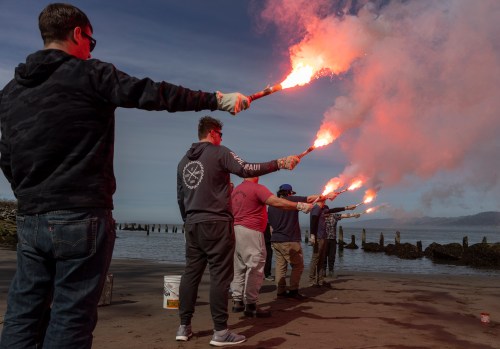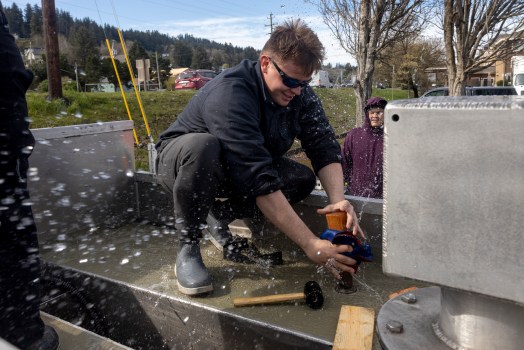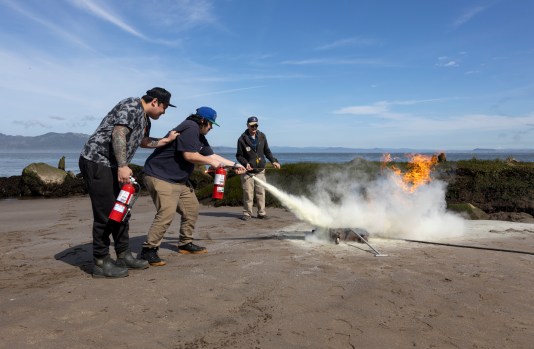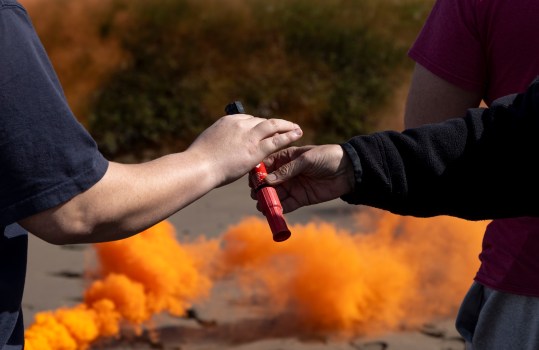Photos: Drill conductor training
Published 12:20 pm Friday, March 28, 2025
1 of 6
A group of mostly commercial fishermen take part in a fishing vessel drill conductor course on Tuesday, March 25. The course, which is organized by the Alaska Marine Safety Education Association, gives the participants strategies to use in the case of a disaster on the boat.
Branko Jurkovich plugs up a hole using offcuts of a neoprene wetsuit and a wooden wedge during a training exercise on Wednesday, March 26. The goal of this exercise was to show how everyday items can be used to slow the flow of water in the event of a leak in the vessel.
Head instructor Curt Farrell tips a scale model fishing vessel inside of a tub of water during a training on Wednesday, March 26. Weights can be added to the boat to change its stability in the water.
Blake Monroe, middle, uses a fire extinguisher to put out a fire during a training at Seafarer's Park on Tuesday, March 25. Trainings like this generally happen once in the fall before crabbing season and once in the spring.
Patrick Monroe,left, fires a flare during a fishing vessel drill conductor course on Tuesday, March 25 at Seafarer's Park. The course provides fishermen with the tools and certification to conduct drills on their own vessels. The course was free to all commercial fishermen.
Instructor Dan Cary, right, hands off a flare during a training on Tuesday, March 25.
A shipboard emergency is an all-too-real possibility for those who make their living on the ocean. That’s where people like Curt Farrell at the Alaskan Marine Safety Education Association come in.
This past week, Farrell led a two-day fishing vessel drill conductor course. During the training, commercial fishermen were equipped with strategies on how to prepare and deal with emergency situations on their boats. The group of mostly commercial fishermen took part in firefighting drills, man-overboard recovery drills, deploying signal flares and more.
The course was built to give its participants the know-how and certifications to conduct their own training with their own crews. This training was also free for the participating commercial fishermen.











